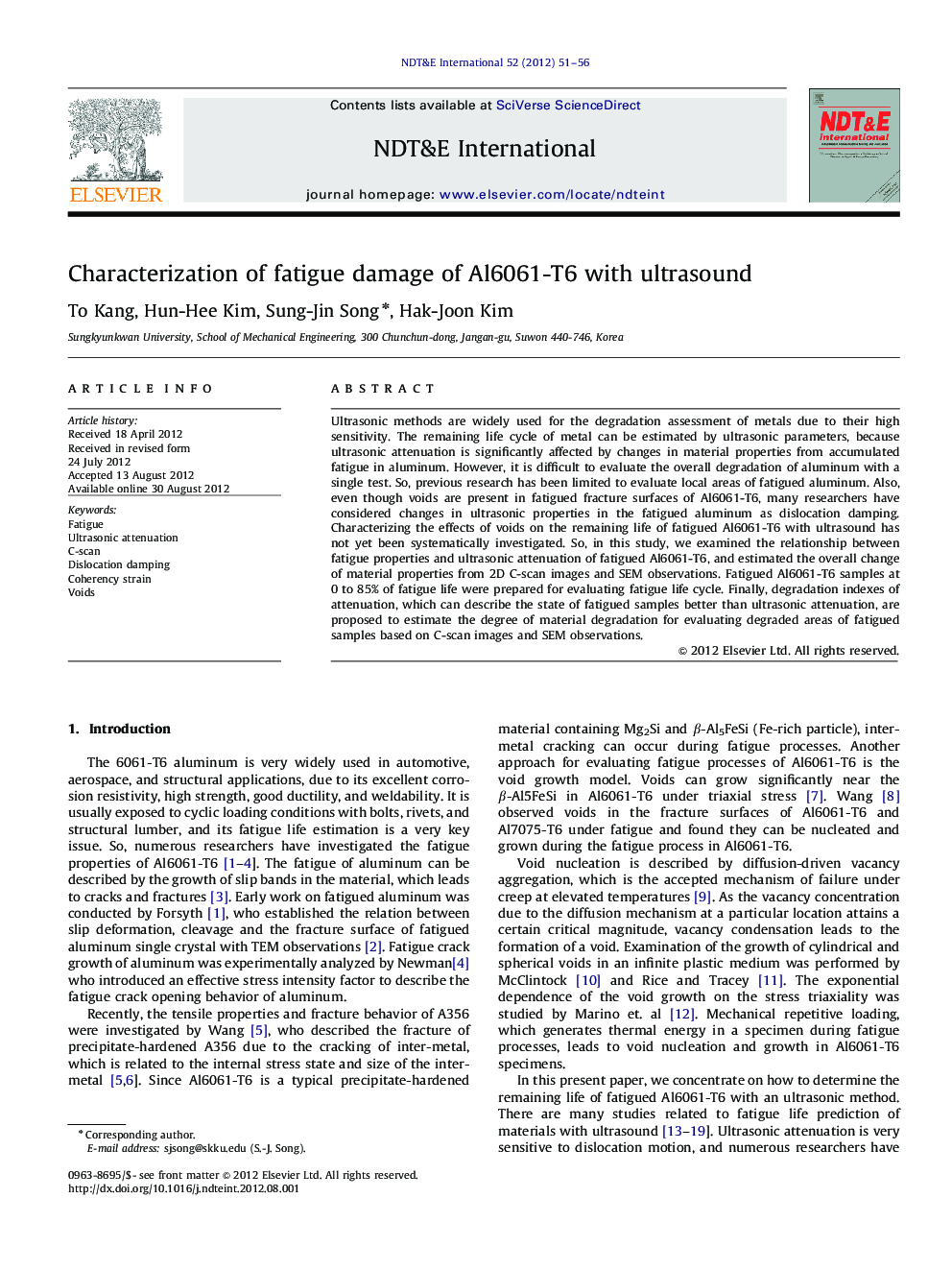| Article ID | Journal | Published Year | Pages | File Type |
|---|---|---|---|---|
| 295218 | NDT & E International | 2012 | 6 Pages |
Ultrasonic methods are widely used for the degradation assessment of metals due to their high sensitivity. The remaining life cycle of metal can be estimated by ultrasonic parameters, because ultrasonic attenuation is significantly affected by changes in material properties from accumulated fatigue in aluminum. However, it is difficult to evaluate the overall degradation of aluminum with a single test. So, previous research has been limited to evaluate local areas of fatigued aluminum. Also, even though voids are present in fatigued fracture surfaces of Al6061-T6, many researchers have considered changes in ultrasonic properties in the fatigued aluminum as dislocation damping. Characterizing the effects of voids on the remaining life of fatigued Al6061-T6 with ultrasound has not yet been systematically investigated. So, in this study, we examined the relationship between fatigue properties and ultrasonic attenuation of fatigued Al6061-T6, and estimated the overall change of material properties from 2D C-scan images and SEM observations. Fatigued Al6061-T6 samples at 0 to 85% of fatigue life were prepared for evaluating fatigue life cycle. Finally, degradation indexes of attenuation, which can describe the state of fatigued samples better than ultrasonic attenuation, are proposed to estimate the degree of material degradation for evaluating degraded areas of fatigued samples based on C-scan images and SEM observations.
